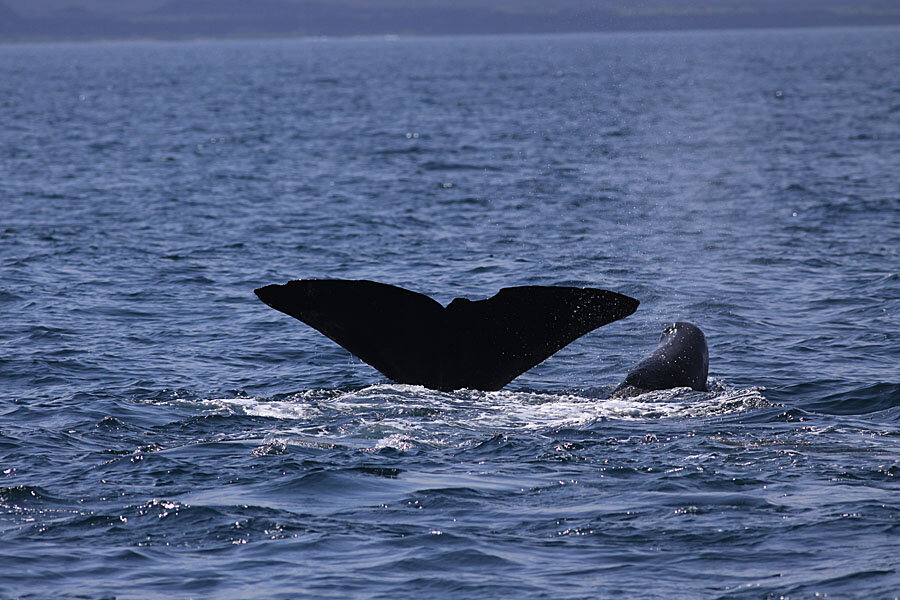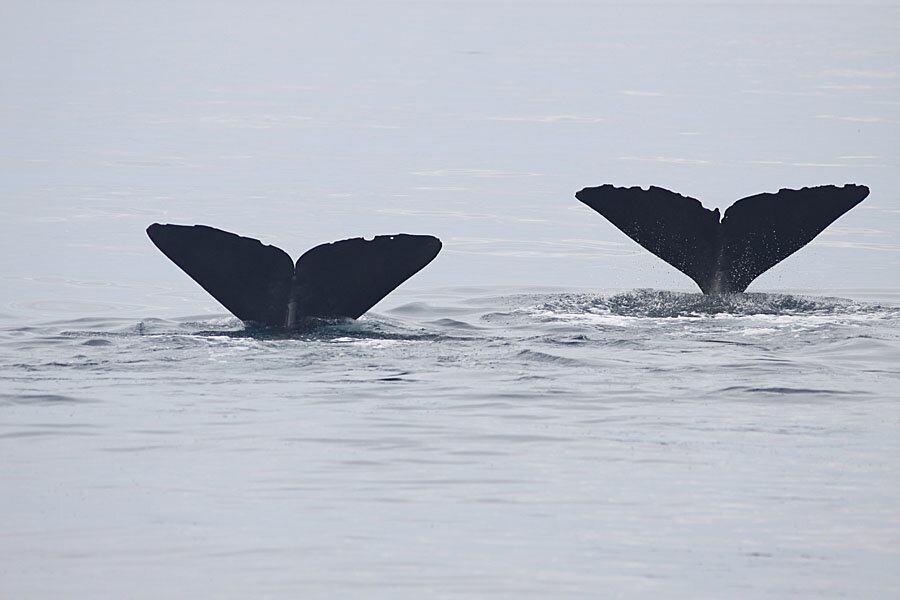Of cliques and clicks: How sperm whale dialects influence social groups
Loading...
Human social groups often tend to form based on common backgrounds, interests, or languages.
Deep in the ocean, cliques are click-based, say scientists. Sperm whales, with the largest brains and most powerful sonar in nature, also prefer to hang out with whales they have the most in common with.
The whales' communication tipped off researchers: Different groups of sperm whales make different sounds.
The clicks that these whales use to communicate actually constitute different dialects that reinforce social hierarchies, say researchers at Dalhousie University in Halifax in a paper published in the journal Nature on Tuesday.
Researchers have long known that female sperm whales frequently form clans based on family relations. "You usually find a mom and her calf and grandmas and other related individuals all hanging out together and chit-chatting," says Mauricio Cantor, lead author and PhD candidate in the biology department at Dalhousie University.
"They do form groups with other females. But, the thing is, they tend to form groups with those whales that already perform the same types of sounds for communication," Mr. Cantor adds. Researchers call this a vocal clan.
Which came first, dialects or clans?
Researchers have puzzled over whether the structure of whale society led to the development of dialects or if dialects grouped whales together in distinct clans. It was a chicken-and-egg problem.
"It is kind of a circular relationship," says Cantor, "an interplay between who you interact with and what kind of information or behavior you learn from that."
"It's what we call biased social learning," Cantor says. The whales tend to interact with other individuals that already communicate like them, but they also learn the dominant ways of communicating in order to fit in that group. "They tend to learn the most common sounds, like conforming to a fashion," Cantor explains.
A question of culture
Can animals have culture? Cantor says this is a hot topic among biologists and social scientists.
Some think culture can be found throughout the animal kingdom, while others think the term should be reserved for humans. But really, "it all depends on how you define culture," says Cantor.
On land, Cantor explains, animals can control access to a food source by controlling territory. In the ocean, that becomes more difficult. The added degree of difficulty makes information a much more valuable resource for marine animals, and makes communication vital.
Sperm whales are "a quite fascinating species just for having a few extreme characteristics," Cantor says. They dive the deepest and longest, plus they have the largest brains, largest noses, and the most powerful sonar in the animal world.
"All of this makes them very effective predators, but also very cooperative and social creatures," says Cantor. The realization that sperm whales living in the same area at the same time seemed to use similar sounds for social interaction has captivated researchers.
What's next?
In order to examine these trends, researchers put 18 years of sperm whale recordings, gathered off and on since 1985, into a computer model that helped them define the various dialects.
Now, they have to go back to the field to determine if the patterns they observed continue over time. "We know that everything tends to change over time. Individuals change. The behavior changes. The information changes. Everything changes," says Cantor. They also have to check to see if the whales remain organized in the same way as they were when the data was initially collected.
Cantor expects that the clans, and their dialects, will hold strong.









